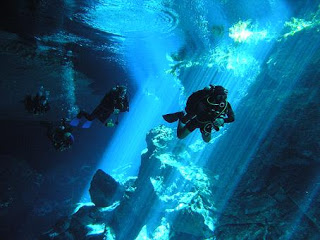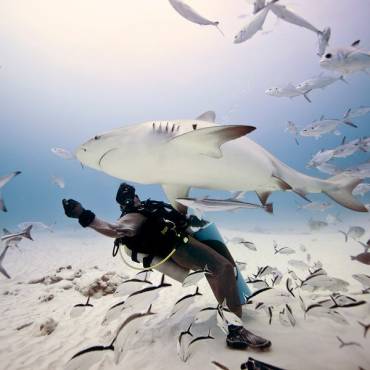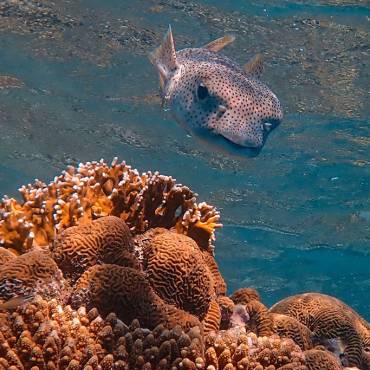UNDERWATER COMMUNICATION
Diving offers you the opportunity to be with your own thoughts and gives you the peace necessary to stop and appreciate the nature around you.
Part of the charm of the underwater world, is its relative calm and silence, which gives you the opportunity to escape the incessant noises and alarms of life outside the water. Although it is difficult to communicate underwater, in your course you will learn the main hand signals to ensure effective communication and avoid problems.
This is a small guide to the main hand signals to use underwater.
The first and main hand signal that divers learn is “Ok”. It is done by joining the tip of the index finger with the tip of the thumb, extending the other three fingers. This signal is used both to ask and to answer; This means that if someone makes the “ok” sign, you must respond in the same way or indicate if it is not.
Many times it is confused with the thumbs-up sign; this should be avoided as this sign means “end of diving”.
A raised thumb; for diving; means “up” It should not be confused with the “Ok” sign.
The golden rule of diving is that, any diver, at any time can make the signal “up” to end the dive. It is a very important safety signal that ensures divers do not exceed a comfortable dive.
Divers usually say “High” in one or two different ways, the first method is to keep the palm of the hand flat, facing forward. The other way of representing it is with the fist closed and facing the diver.
It is also a signal that demands response, so divers must respond with it when understanding the message.
"Level"
The “No Air” signal is taught to all divers from their first course so that everyone knows how to react to an emergency situation. The chances of getting to run out of air in a dive are very few, when all the correct procedures are performed during the dive.
Hand signals are generally international, but it is always important to make sure that your dive master and you have the same understanding.
Learn the local signs so you do not miss the local animals that can be exceptional and make a difference in your diving.
And remember to dive fun, dive safely, dive with PHANTOM!
The post Underwater communication appeared first on Phantom Divers.













